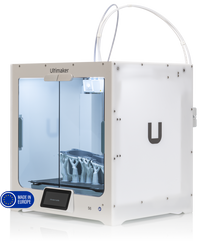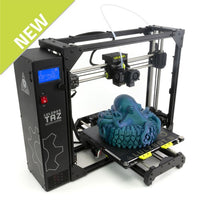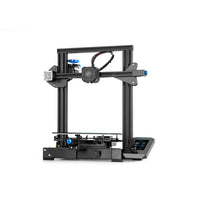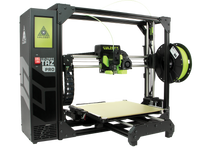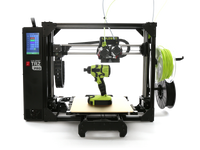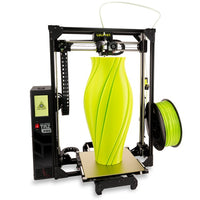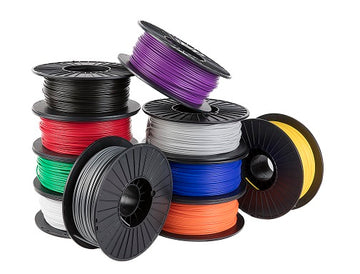3D Heals - Guest post

Contributed by: Hui Jenny Chen, M.D. (Founder and CEO of 3DHeals) You can win a free ticket to the upcoming 3DHeals2017 Global Conference by entering at the bottom of this article.
Why 3D Printing (and Bioprinting) will help healthcare with a quantum leap?
Background:
3D printing (also known as additive manufacture) is technically “invented” in the 1980s[1]. It represents a new method of digital manufacture by adding thin layers of material one on top of another based on a digital blueprint. The concept of creating physical objects based on digital data in a layer-by-layer fashion was quickly extended to bio-printing, where the raw material is bio-ink or stem cells. In a way, 3D printing represents an evolved form of human-computer interaction.
Main Technical Advantages:
For the healthcare sector, the main technical advantages of 3D printing include the following:
- Mass customization: Perfect examples include the Invisalign and hearing aids. Although each individual brace or hearing aid is unique to the patient, the production process is highly automated and in much larger scale than their traditional counterparts.
- Digital design and fabrication for the human body: Earlier 3D printing product for the human body focuses on exoskeleton, prosthesis, and wearable, in light of much lower regulatory barriers and concern for safety with such a new manufacture process. However, as the industry grows with new materials and printing technologies, more devices are being invented and approved for other more “internal” treatments. 3D printed metal implants are a great example of that. The most ambitious of all is bio-printing, where personalized replacement tissue can be “manufactured” on demand. Many believe bioprinting will play a major role in human organogenesis, or manufacture of human organs. The recent HBO series “West World” adopted this concept to an extreme, but not too far from what could be possible in a decade or so.
- Remote care via internet: Because of the availability of the internet, providing tangible healthcare to rural areas, third world countries, or even in the battle field is now a possibility, because the digital blue print can be transferred anyway via the information highway at a very low cost. This eventually will also be critical for space travel.
- Accelerate medical education: Practices make perfect. As long as humanity still depends on human physicians for surgeries, the need of haptic-experience-based training will always be there. However, given a growing aging population, current pace of medical training will not meet the demand for healthcare providers in the near future. Having physical simulation products like 3D printed models will allow the training process to shorten in duration for individual trainees and therefore decrease the supply-demand mismatch in healthcare labor force. Even after school, surgeons facing rare, complex, high-stake procedures can benefit from having these simulation models according to more and more evidences.[2]
- Collaboration with other emerging technologies (Artificial intelligence, augmented reality (AR), virtual reality (VR), robotics, and etc.): At the end of the day, 3D printing is just another extension of computer science, very much like other emerging technologies like VR/AR and AI. It is a new iteration of of an older tool, computers. It is a foreseeable future that many of these emerging technologies or tools will work together in many different healthcare applications. For example, several companies are already working on how AI can improve the visualization and segmentation process in 3D printing CAD software.
From an outcome perspective, these advantages translate into the following: 1) Cutting cost and time of existing practice 2) Invention of new procedures, concept, and products previously inconceivable, and finally 3) New perspectives on digital health.
Past Trend:
However, it is only recently the public, especially mainstream healthcare sector, starts to welcome this technology with excitements. There are a few speculations on why things are different now than then. First, regulatory barrier appears less opaque. The FDA website now has a significant amount of information and links on 3D printing.[3] About 85 3D printing based medical devices are FDA cleared in 2016.[4] Second, several major 3D printing patents are expiring or have already expired. This translates into potential more rapid innovations and growth. Finally, investment into the field is trending upwards. In 2012 President Obama’s showed visible support of the additive manufacture industry through the creation of the National Additive Manufacturing Innovation Institute (NAMII), and the U.S. government investing in 3D printing is the biggest in the world. Several companies made a number of large internal and external investments in recent years, showing confidence in the growth of the field.[5]
Future opportunities:
Terry Wohlers, the leading 3DP industry analyst, estimated in the 2015 Wohlers Report that the additive manufacturing (AM) industry, consisting of all AM products and services worldwide, grew 25.9% YOY to $5.165 billion in 2015. The report also estimated 13% of the market[6] to be in medical, which puts the size of the healthcare 3D market at about $671M. As impressive as the numbers, however, if 3D printing industry continues to only grow at a pace of about 20% per year, it will still be an insignificant fraction of the multi-trillion dollar manufacture industry in decades to come. True adoption of a new technology like 3D printing requires accelerated innovative application of the technology, in addition to continued development of the new tool itself. That is, having the best machines, software, and materials would mean little if there is no meaningful application to employ these. Thus, the most important element in adopting a new technology is people.
A quick survey of healthcare 3D printing companies shows just that.
In 1997, Zia Chishti and Kelsey Wirth founded Align Technology Inc, arguably one of the most successful 3D printing company in history. The inception of the company came from Zia’s own personal experience as a patient with dental braces. A business man himself, Zia connected the dots between digital workflow and additive manufacture, and Invisalign was born.

In 2012, an Australian dentist Dr. Chris Hart founded Oventus Ltd., a company focusing on 3D printed mouthpiece to treat sleep apnea, a prevalent condition that often requires cumbersome mask or surgery. Dr. Hart himself also suffers from sleep apnea and basically treated himself with his own invention, which now evolves into an IPO device company ready for the US market.

In 2014, a young engineer founded a software company called Standard Cyborg, focusing on streamlining the digital workflow in the process of making prosthetics. His passion for his company came from his own physical condition: he was born without a fibula in his right leg. Growing up, he had spent countless hours in office visits to have the perfectly fitting prosthetic legs.

In 2016, a fashion designer Victor Portes founded the company Silou Elle. Victor is a very unfortunate gentleman with several female family members afflicted with breast cancer. Given his witness of the painful experiences of the cancer survivors, Victor vows to produce a much better alternative 3D printed breast prosthesis for women treated for breast cancer.
All these founders are all extremely emotionally invested in their products. Their personal experiences with their (or their loved ones’) disease make them more empathetic towards the consumer and more passionate about their products. These traits allow them to sharply focus on problems truly worth solving. Finally, these individuals were also very fortunate to have the knowledge and accessibility to 3D printing and related tools. Without 3D printing, however, their problems will be solved at a much slower pace or impossible to be solved.
Therefore, the most powerful feature of 3D printing is that it empowers patients and healthcare providers to be innovators themselves, by giving them a new tool (like the computers) to be creative in solving problems that are worth solving and problems that are better solved by 3D printing.
And that is when 3D printing will help healthcare with making a quantum leap.
Share this event on social media and win a free ticket!
[2] Lessons Learned From Using 3D Printed Models to Improve Surgical Planning
[3] 3D Printing of Medical Devices
[4] FDA Issues Long-Awaited 3D Printing Guidance for Medical Devices
[5] Ten Healthcare 3D Printing Events that Defined the Field in 2016
[6] 13% is a result of a survey of 40 systems manufacturers and 87 service providers globally, based on their revenue, Wohlers Report 2015

